Explanation of problem examples:
T1.
#include <stdio.h>
int main()
{
int a, b, c;
a = 5;//a=5
c = ++a;//c=6 a=6
b = ++c, c++, ++a, a++;
//b=7 c=8 a=8
b += a++ + c;
//b=23 a=9 c=8
printf(" a = %d\n b = %d\n c = %d\n:", a, b, c);//9 23 8
return 0;
}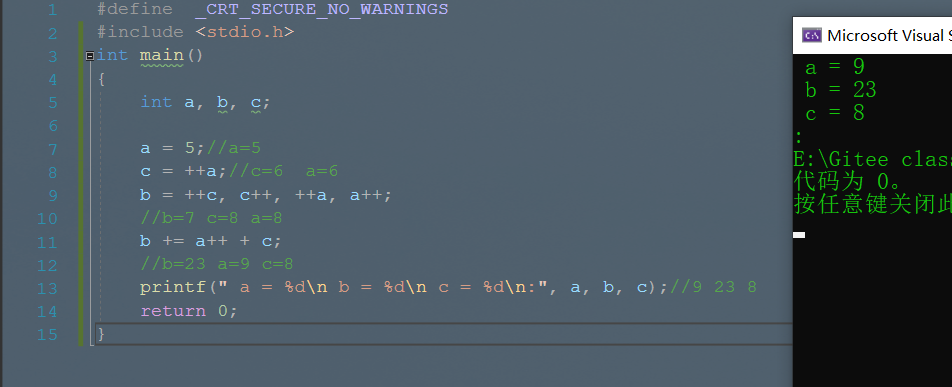 T2.
T2.
Count the number of 1 in binary
int count_number_of_1( int m)
{
int c = 0;
while (m)
{
if (m % 2 == 1)
{
c++;
}
m /= 2;
}
return c;
}
int main()
{
int n = 15;//n the number of 1 in binary of the complement placed in memory
int ret = count_number_of_1(n);
printf("%d\n", ret);
return 0;
}
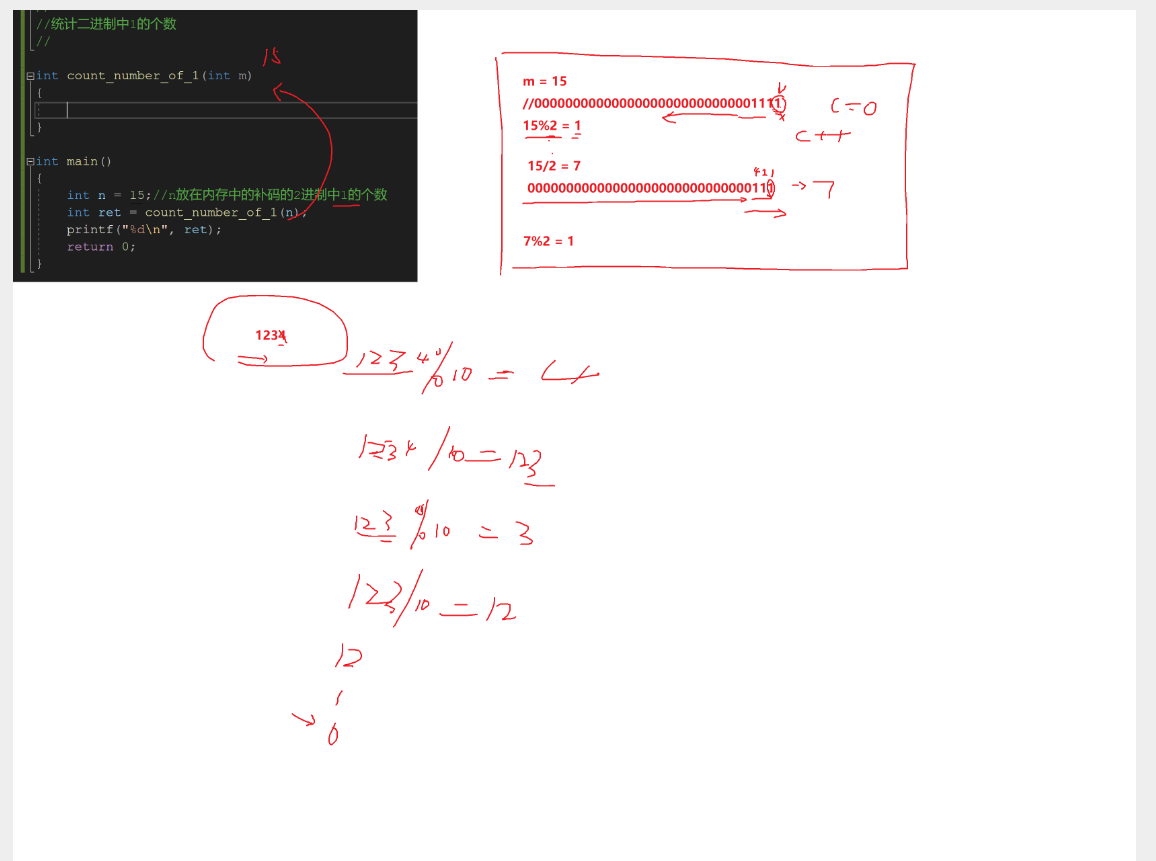
For negative numbers, it will be invalid!
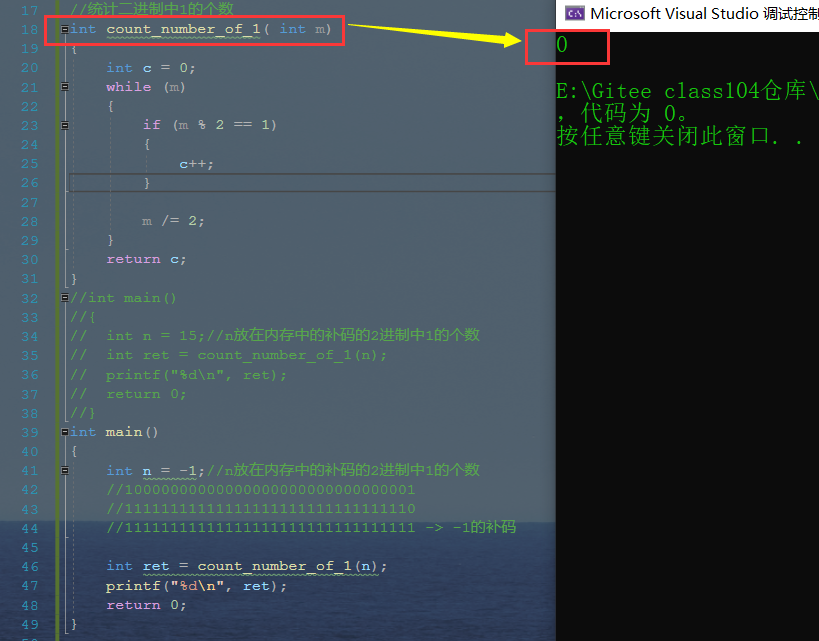
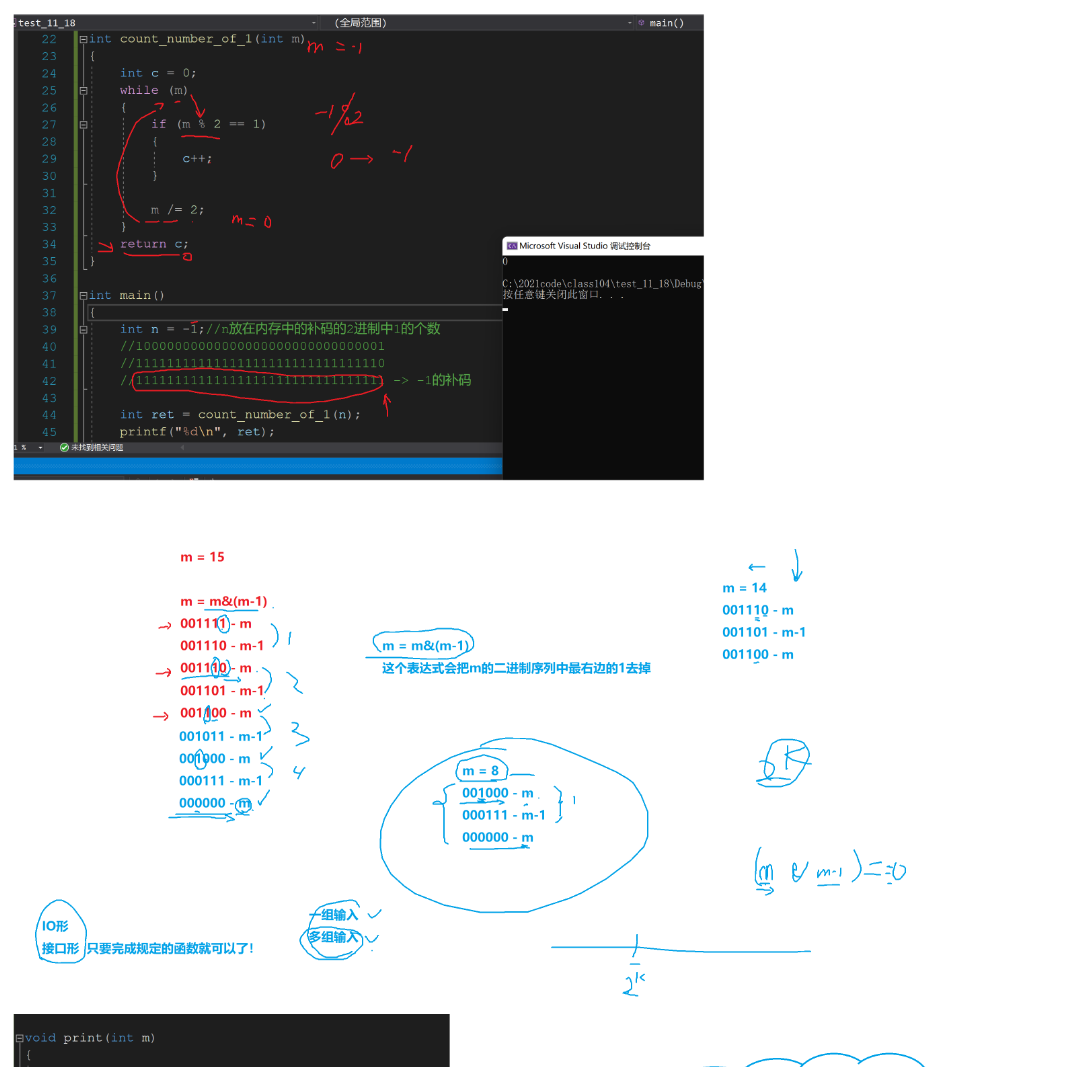
Solution 1 for negative numbers:
When unsigned is used, N in the main function is - 1, which is a signed bit, but m in the definition function does not want to be a signed bit. Therefore, when passing n to m, unsigned is used. By default, the complement of an unsigned integer is passed, and all its bits are significant bits.
Note: if the absolute value of - 1 is not used, the logic will not work if the number of complement 1 is solved!
int count_number_of_1(unsigned int m)
{
int c = 0;
while (m)
{
if (m % 2 == 1)
{
c++;
}
m /= 2;
}
return c;
}
int main()
{
int n = -1;//n the number of 1 in binary of the complement placed in memory
//10000000000000000000000000000001
//11111111111111111111111111111110
//11111111111111111111111111111111111111111111111111111111111 - > - 1 Complement
int ret = count_number_of_1(n);
printf("%d\n", ret);
return 0;
}
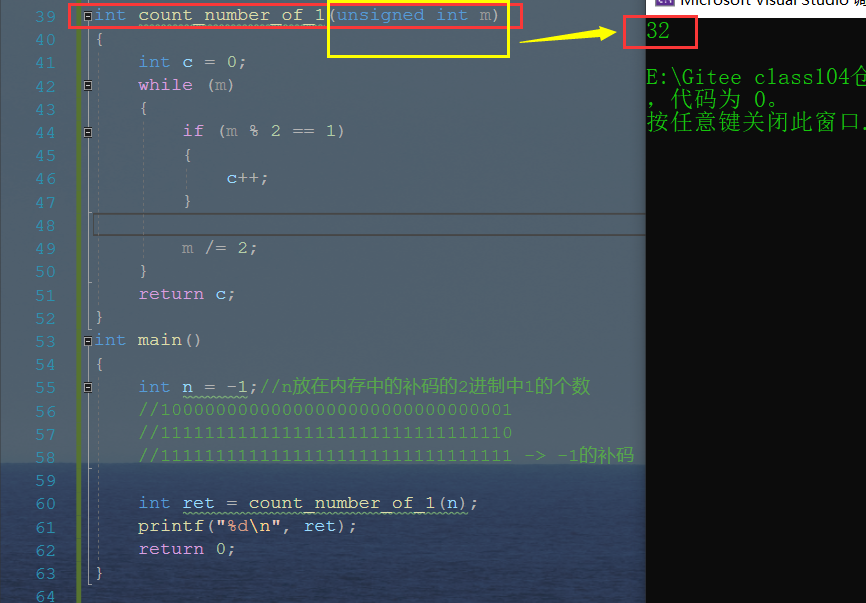
Solution 2 for negative numbers:
int count_number_of_1(int m)
{
int c = 0;
int i = 0;
for (i = 0; i < 32; i++)
{
if ((m & 1) == 1)
{
c++;
}
m >>= 1;
}
return c;
}
int main()
{
int n = -1;//n the number of 1 in binary of the complement placed in memory
//10000000000000000000000000000001
//11111111111111111111111111111110
//11111111111111111111111111111111111111111111111111111111111 - > - 1 Complement
int ret = count_number_of_1(n);
printf("%d\n", ret);
return 0;
}
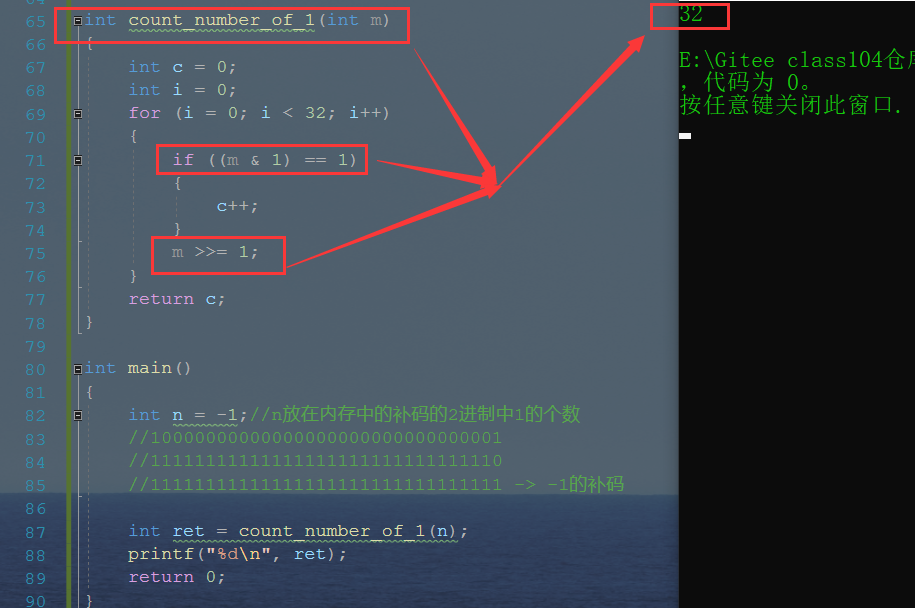
Solution 3 for negative numbers:
int count_number_of_1(int m)
{
int c = 0;//Counter
while (m)
{
m = m & (m - 1);
c++;
}
return c;
}
int main()
{
int n = -1;//n the number of 1 in binary of the complement placed in memory
//10000000000000000000000000000001
//11111111111111111111111111111110
//11111111111111111111111111111111111111111111111111111111111 - > - 1 Complement
int ret = count_number_of_1(n);
printf("%d\n", ret);
return 0;
}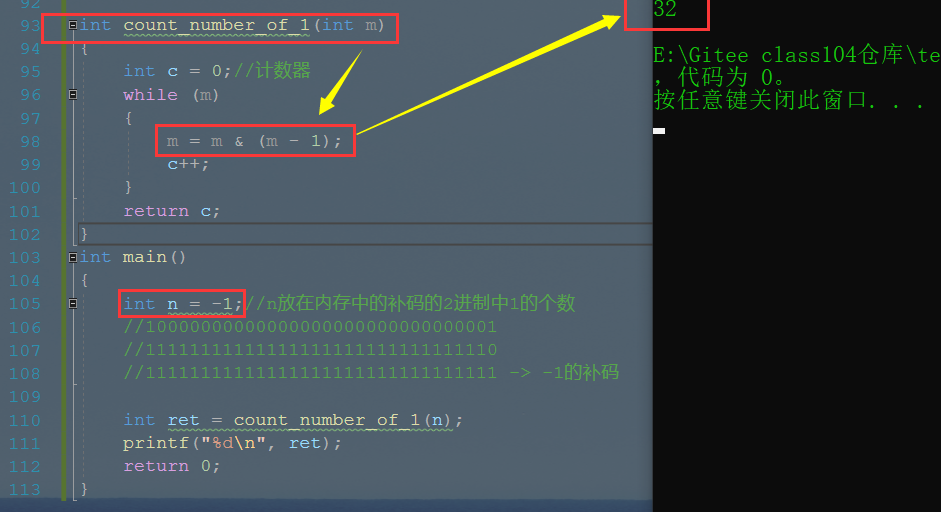
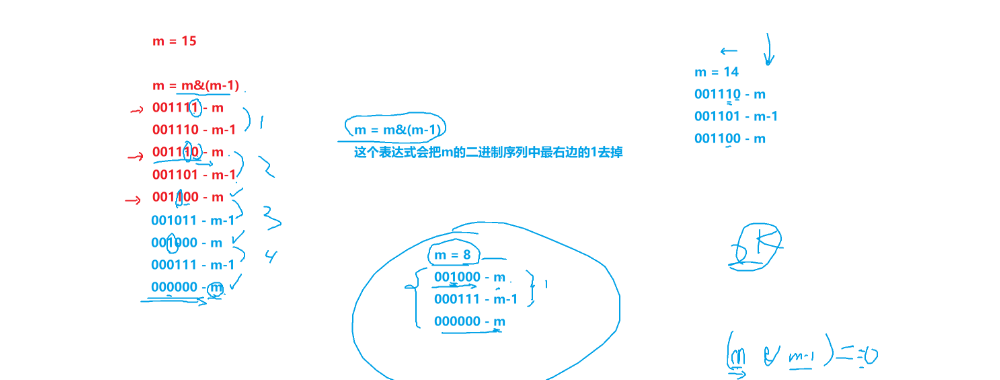
To judge whether a number m is the k-th power of 2, you can use M & (m-1) = = 0
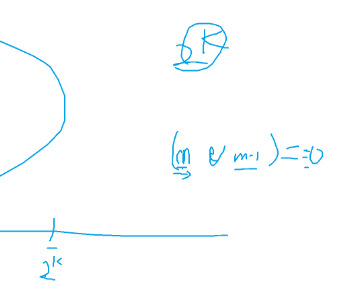
Online question brushing form:

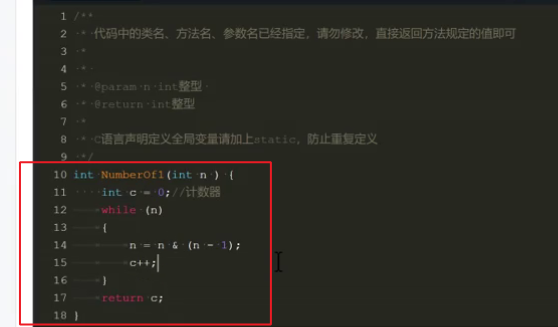
T3.

int count_diff_bit(int m, int n)
{
int i = 0;
int c = 0;//Counter
for (i = 0; i < 32; i++)
{
if ((m & 1) != (n & 1))
{
c++;
}
m >>= 1;
n >>= 1;
}
return c;
}
int main()
{
int m = 1999;
int n = 2299;
int ret = count_diff_bit(m, n);
printf("%d\n", ret);
return 0;
}
Method 1: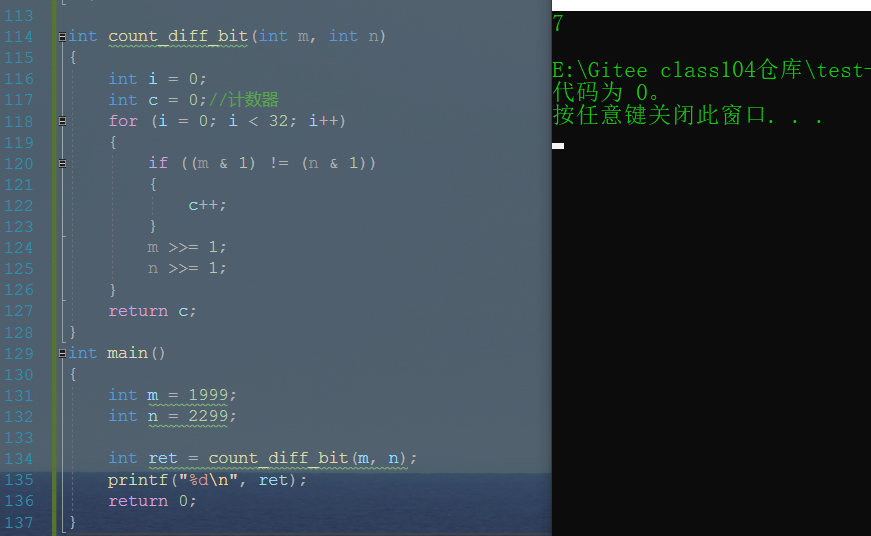
Method 2:
//XOR operator
//The same is 0 and the difference is 1
int count_diff_bit(int m, int n)
{
int i = 0;
int c = 0;//Counter
int tmp = m ^ n;
//How many 1's are there in the binary bits that compute tmp
while (tmp)
{
tmp = tmp & (tmp - 1);
c++;
}
return c;
}
int main()
{
int m = 1999;
int n = 2299;
int ret = count_diff_bit(m, n);
printf("%d\n", ret);
return 0;
}
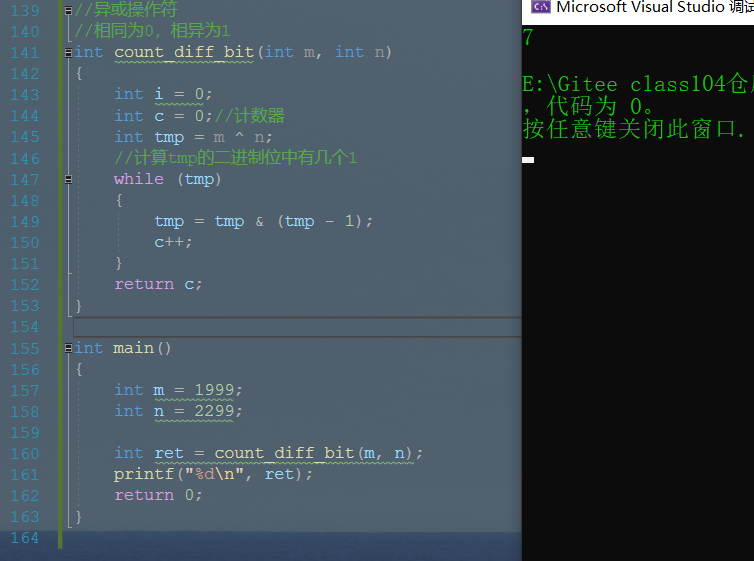
Keep learning every day and the brain structure will improve!
T4.
//Title:
//Print odd and even bits of integer binary
//Title Content:
//Get all even and odd bits in an integer binary sequence, and print out the binary sequence respectively
//
void print(int m)
{
//Print odd digits
int i = 0;
for (i = 30; i >= 0; i -= 2)
{
printf("%d ", (m >> i) & 1);
}
printf("\n");
//Print even digits
for (i = 31; i >= 1; i -= 2)
{
printf("%d ", (m >> i) & 1);
}
}
int main()
{
int m = 0;
//
//00000000000000000000000011001001
//
scanf("%d", &m);
print(m);
return 0;
}
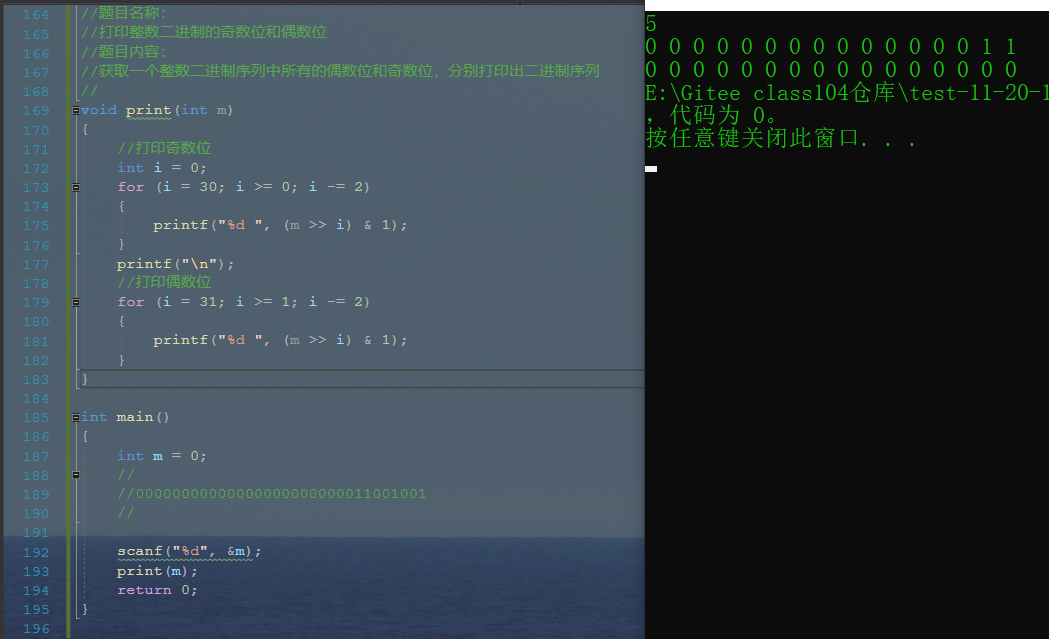
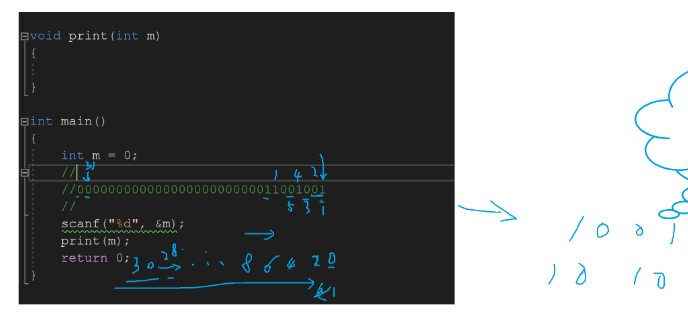
go language!
T5.
int i;//Global variables, if not initialized, default to 0
int main()
{
i--;//-1
if (i > sizeof(i))//-1 > 4
{
printf(">\n");
}
else
{
printf("<\n");
}
return 0;
}
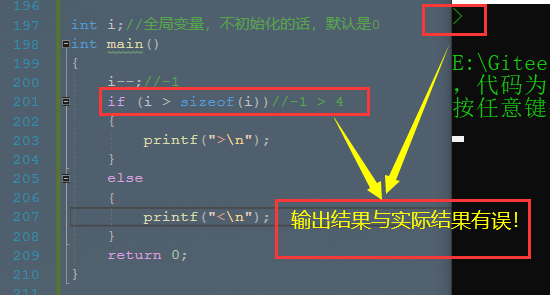
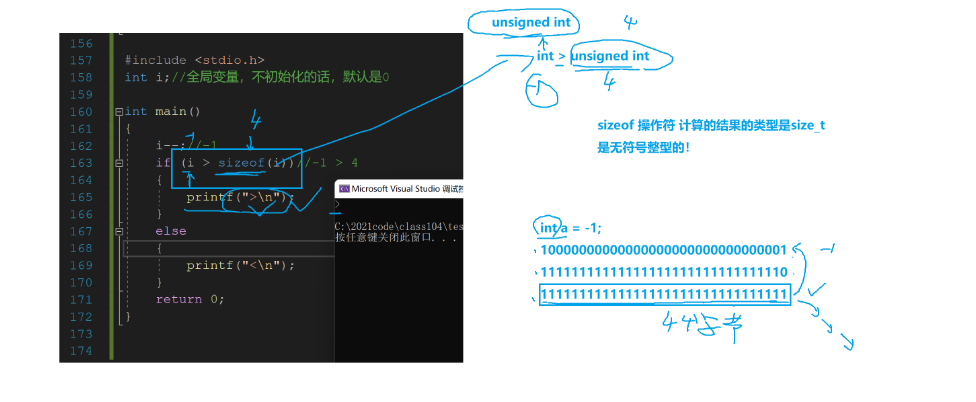
- When 1 is treated as an unsigned bit, its value is 4294967295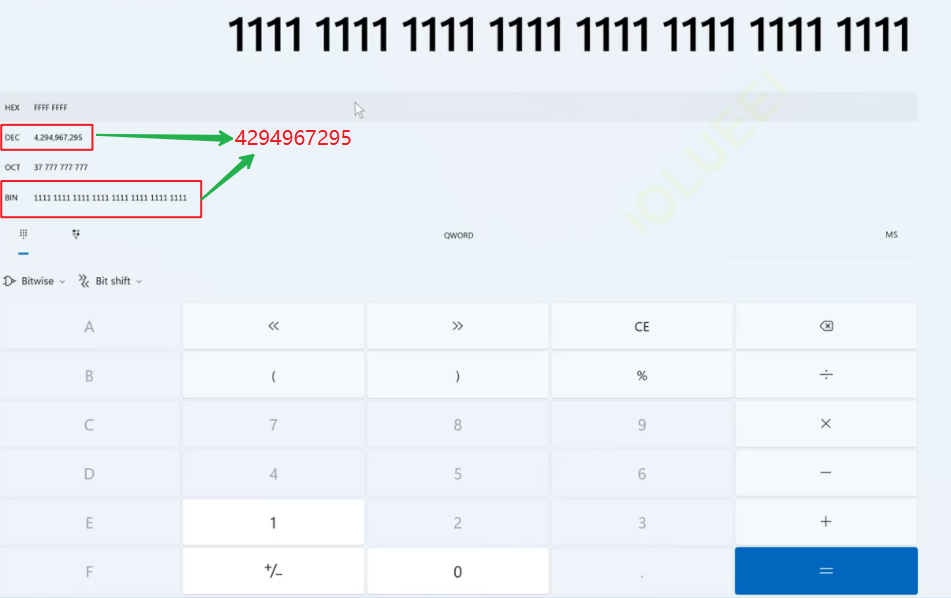
T6.
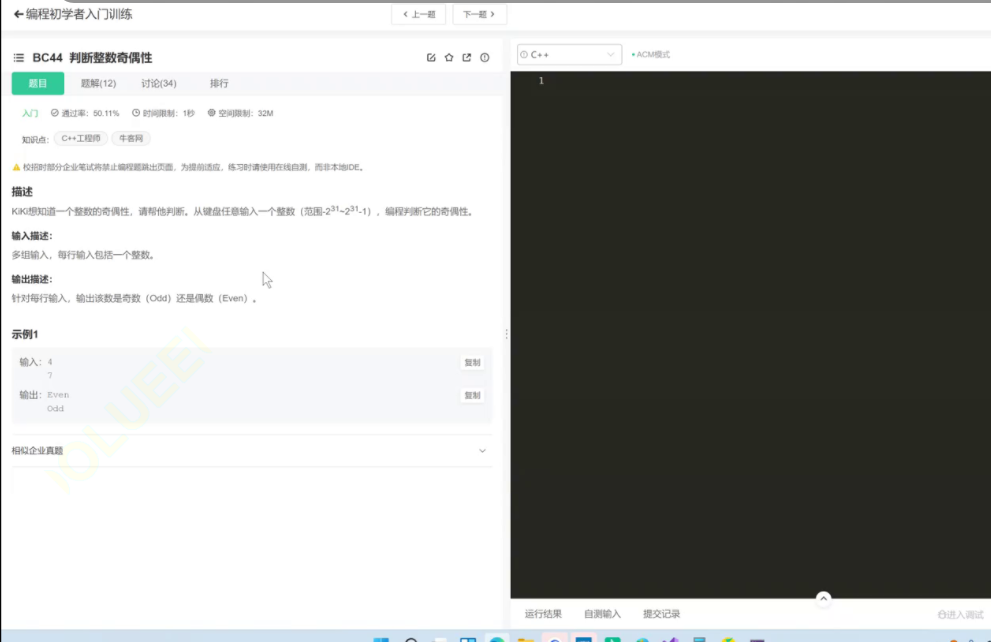
int main()
{
int n = 0;
//EOF - end of file
//
while (scanf("%d", &n) != EOF)
{
if (n % 2 == 1)
{
printf("Odd\n");
}
else
{
printf("Even\n");
}
}
return 0;
}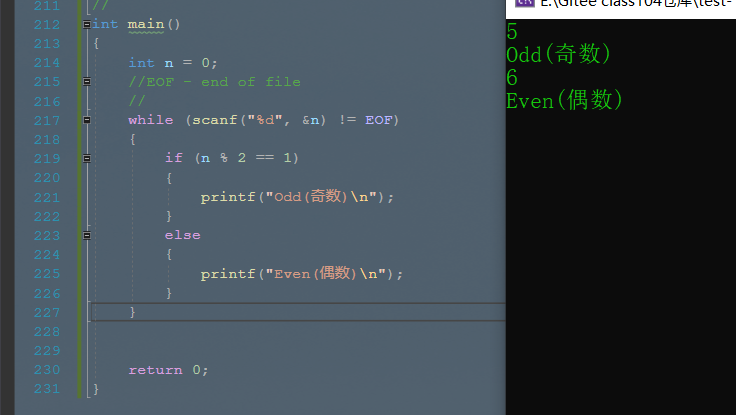
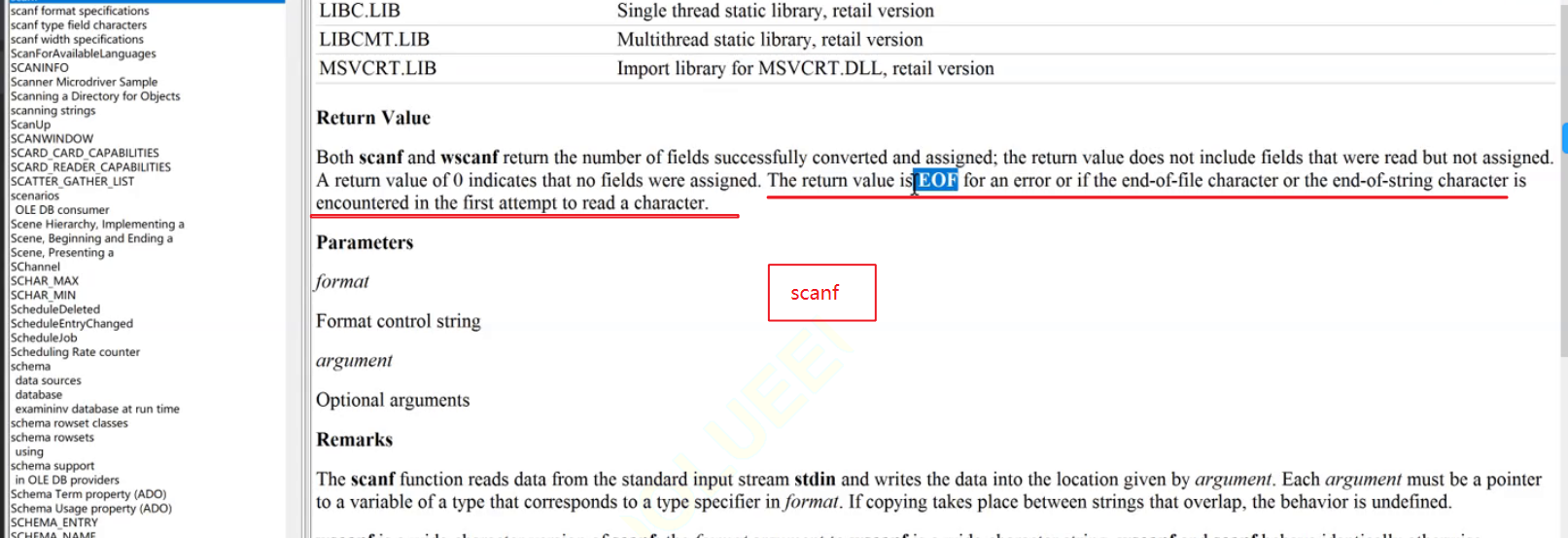
T7.
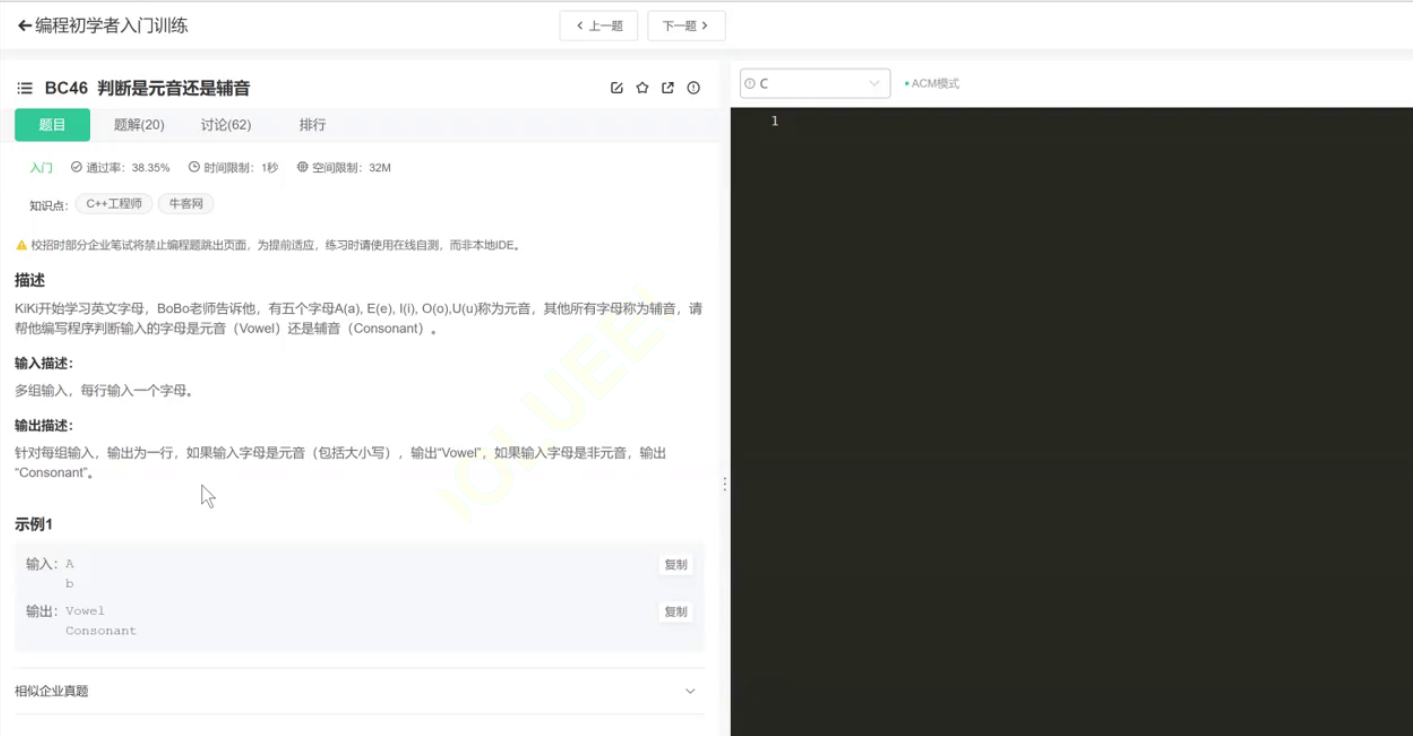
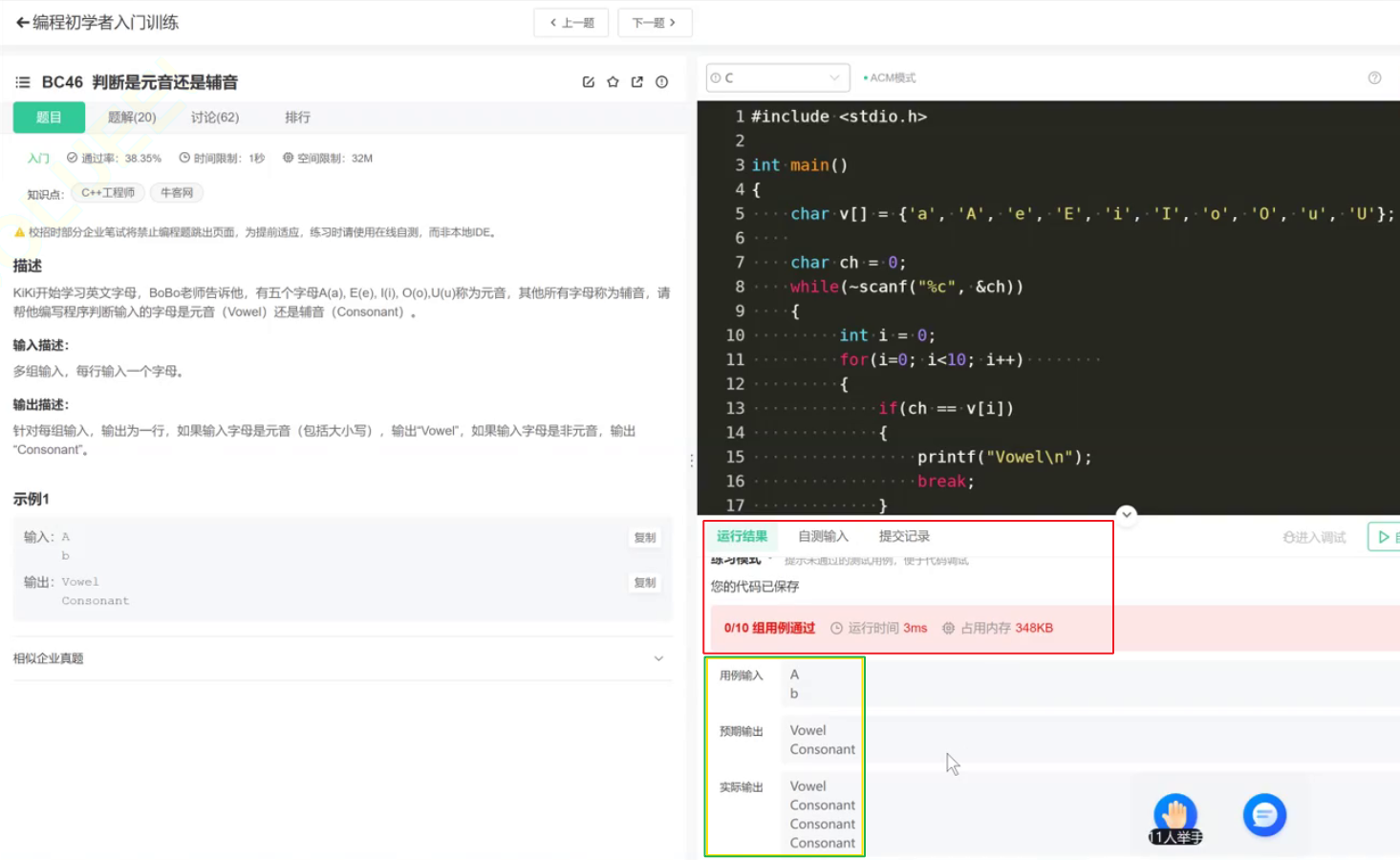
In Visual Stdio 2019 operation example:
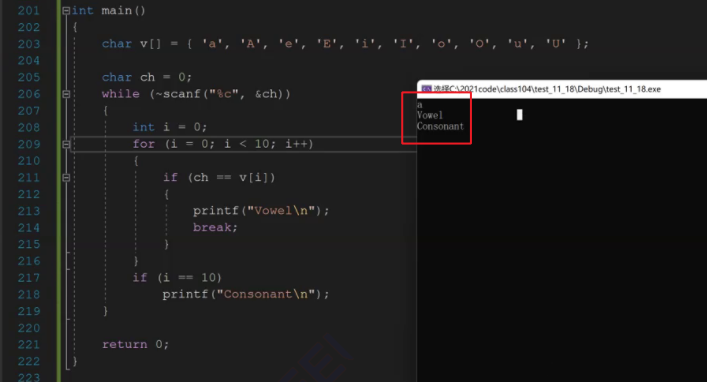
Enter A and b The order is: enter A first and then Space (\ n) and then enter b,
When scanf reads, the first character is read normally, but it will be read in the buffer \ N and passed to & ch, but \ n is neither vowel nor consonant, the total output result is inconsistent with the expectation!
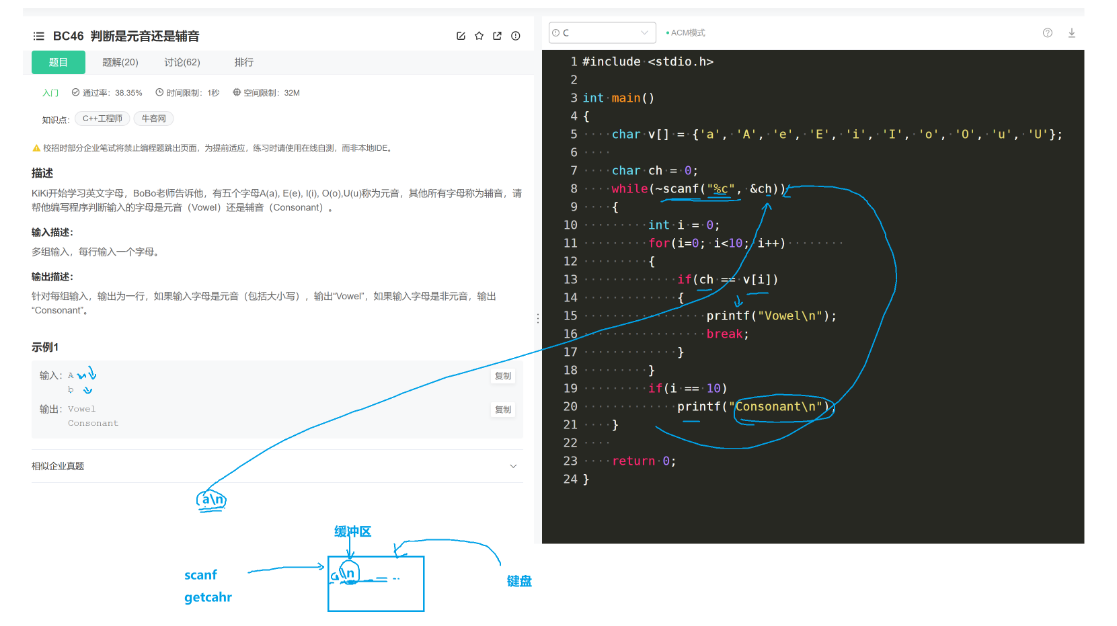
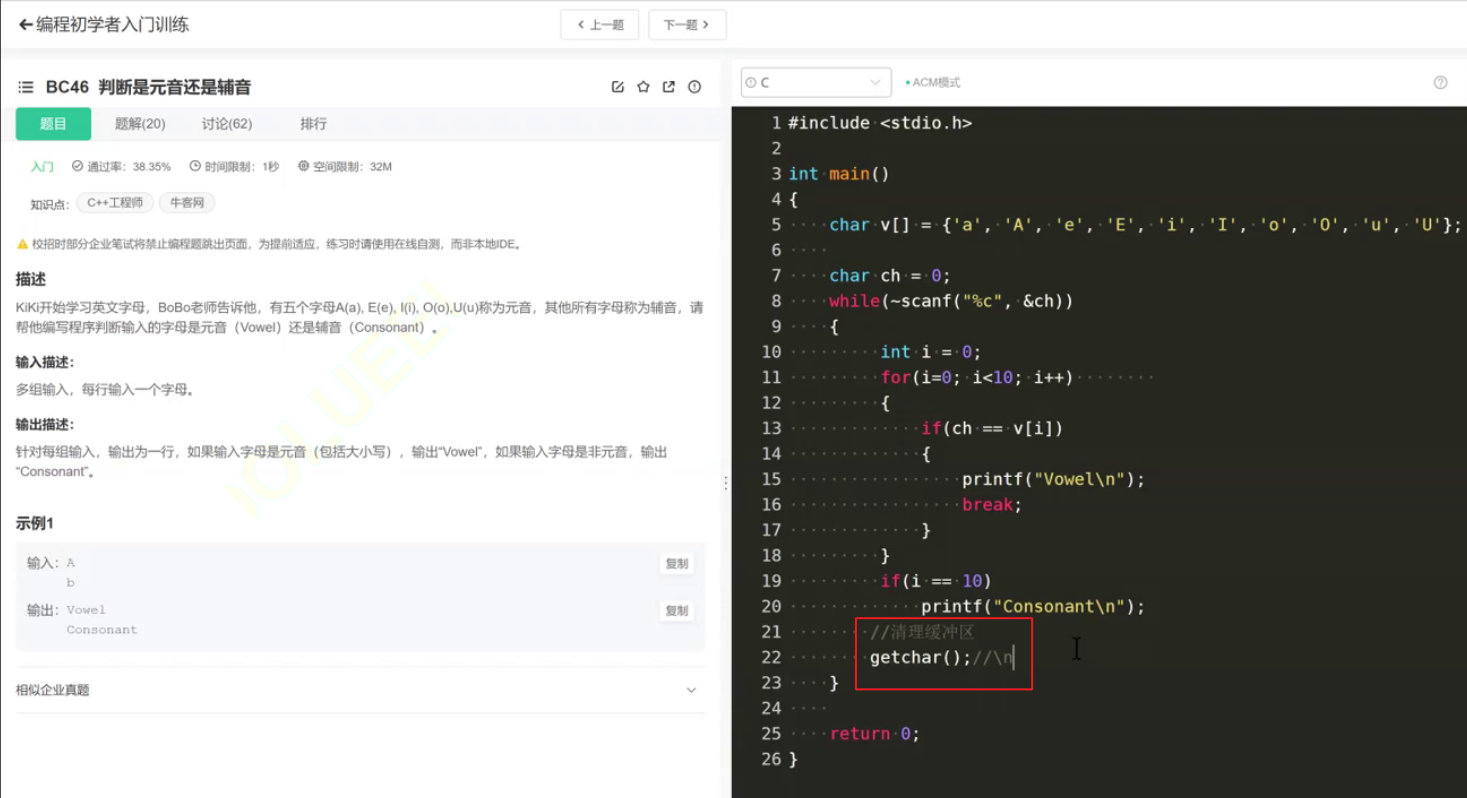
Method 1: use getchar()
Because it is a single input, the getchar loop is not used:
int main()
{
char v[] = { 'a', 'A', 'e', 'E', 'i', 'I', 'o', 'O', 'u', 'U' };
char ch = 0;
while (~scanf("%c", &ch))
{
int i = 0;
for (i = 0; i < 10; i++)
{
if (ch == v[i])
{
printf("Vowel\n");
break;
}
}
if (i == 10)
printf("Consonant\n");
//Clear buffer
getchar();//\n
}
return 0;
}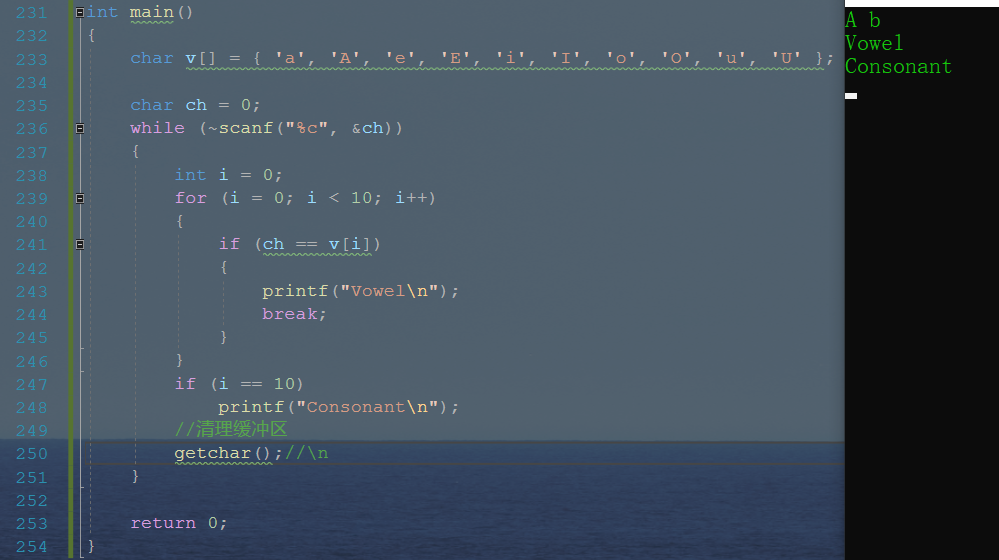
Method 2: scanf uses% c Only take away when taking characters \ n, not for printing integers! Because taking characters will treat everything in the buffer as characters!
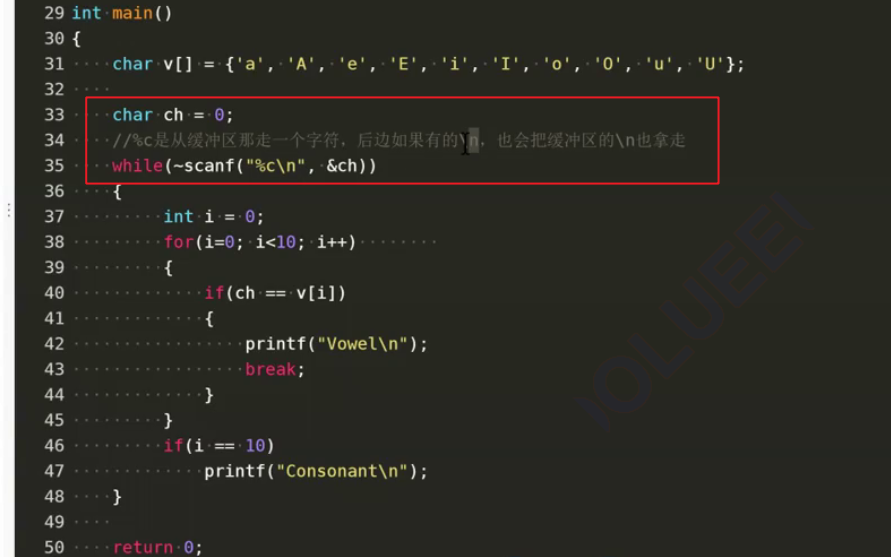
Method 3: see the figure below
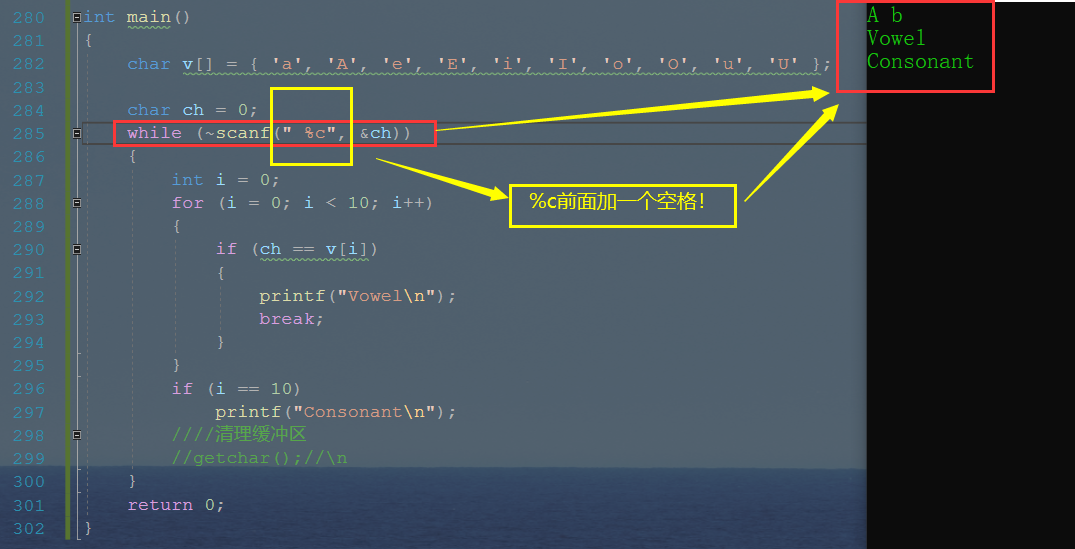
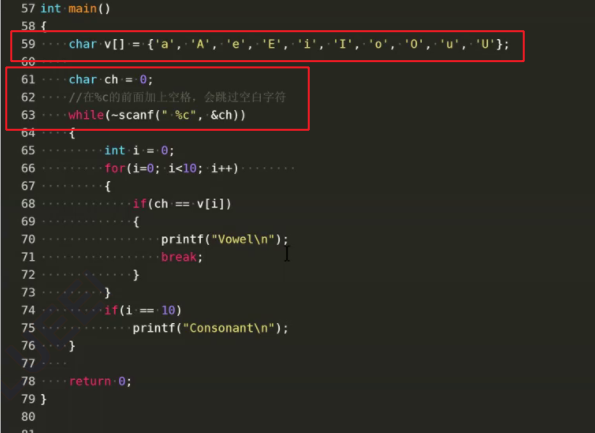
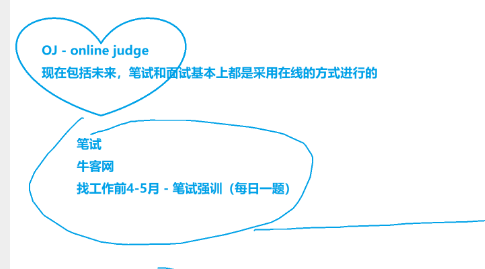
Practice in large enterprises!
Evaluate something correctly!
1.1 basic knowledge of structure
struct tag
{
member-list;
}
variable-list;For example, describe a student:
typedef struct Stu
{
char name[20];//name
int age;//Age
char sex[5];//Gender
char id[20];//Student number
}Stu;//Semicolons cannot be lost

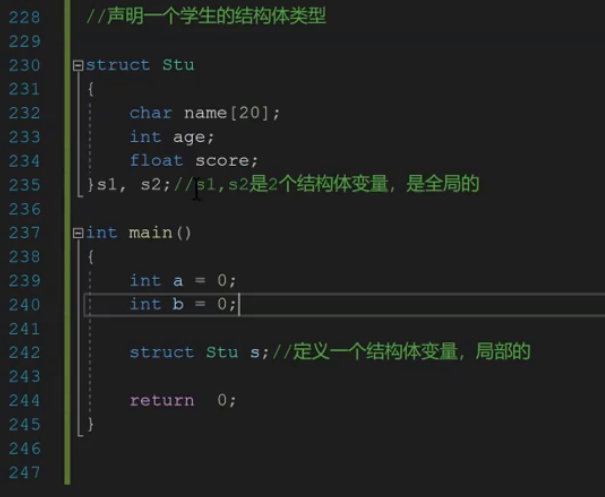
struct Point
{
int x;
int y; }p1; Defining variables while declaring types p1
struct Point p2; Define structure variables p2
Initialization: define variables and assign initial values at the same time.
struct Point p3 = {x, y};
struct Stu Type declaration
{
char name[15]; name
int age; Age
};
struct Stu s = {"zhangsan", 20}; initialization
struct Node
{
int data;
struct Point p;
struct Node* next;
}n1 = {10, {4,5}, NULL}; Structure nesting initialization
struct Node n2 = {20, {5, 6}, NULL}; Structure nesting initializationstruct Stu
{
char name[20];
int age;
float score;
}s1, s2; s1,s2 It is 2 structural variables and is global
int main()
{
int a = 0;
int b = 0
struct Stu s = { "zhansan", 20, 95.5f }; Define a structure variable, local
printf("%s %d %f\n", s.name, s.age, s.score);
return 0;
}
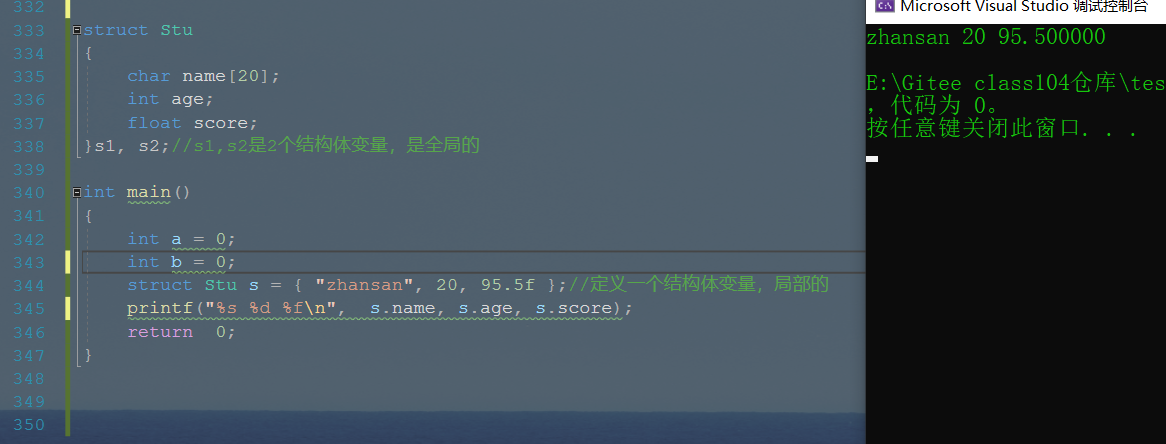
struct S
{
int a;
char c;
double d;
};
struct Stu
{
struct S ss;
char name[20];
int age;
float score;
}s1, s2;//S1 and S2 are two structural variables, which are global
int main()
{
int a = 0;
int b = 0;
struct Stu s = { {100, 'w', 3.14}, "zhansan", 20, 95.5f};//Define a structure variable, local
printf("%d %c %lf %s %d %f\n",s.ss.a, s.ss.c, s.ss.d, s.name, s.age, s.score);
return 0;
}
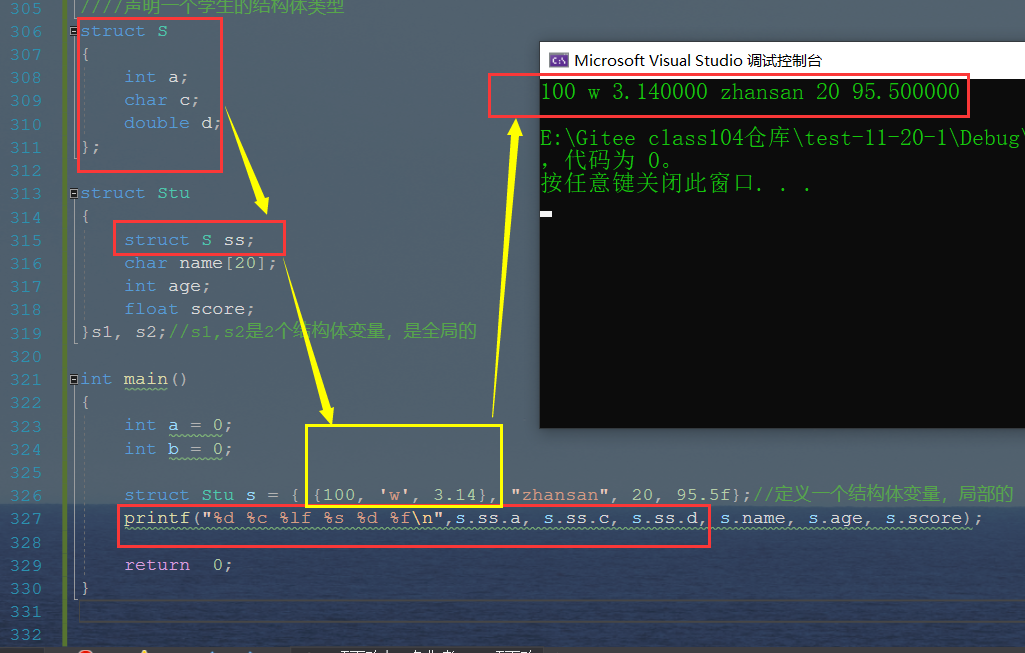
For example:
struct Stu
{
char name[20];
int age;
};
struct Stu s; 
struct S s; strcpy(s.name, "zhangsan"); use.visit name member s.age = 20; use.visit age member
struct Stu
{
char name[20];
int age;
};
void print(struct Stu* ps) {
printf("name = %s age = %d\n", (*ps).name, (*ps).age);
Use structure pointers to access members that point to objects
printf("name = %s age = %d\n", ps->name, ps->age);
}
int main()
{
struct Stu s = {"zhangsan", 20};
print(&s); Structure address transfer parameter
return 0; }3. Structure transmission parameters
struct S {
int data[1000];
int num;
};
struct S s = {{1,2,3,4}, 1000};
Structural transmission parameters
void print1(struct S s) {
printf("%d\n", s.num);
}
Structure address transfer parameter
void print2(struct S* ps) {
printf("%d\n", ps->num);
}
int main()
{
print1(s); Transmission structure
print2(&s); Transmission address
return 0; }
struct S
{
int arr[1000];
float f;
char ch[100];
};
void print(struct S tmp)
{
int i = 0;
for (i = 0; i < 10; i++)
{
printf("%d ", tmp.arr[i]);
}
printf("\n");
printf("%f\n", tmp.f);
printf("%s\n", tmp.ch);
}
int main()
{
struct S s = { {1,2,3,4,5,6,7,8,9,10}, 5.5f, "Hello,World!" };
print(s);
return 0;
}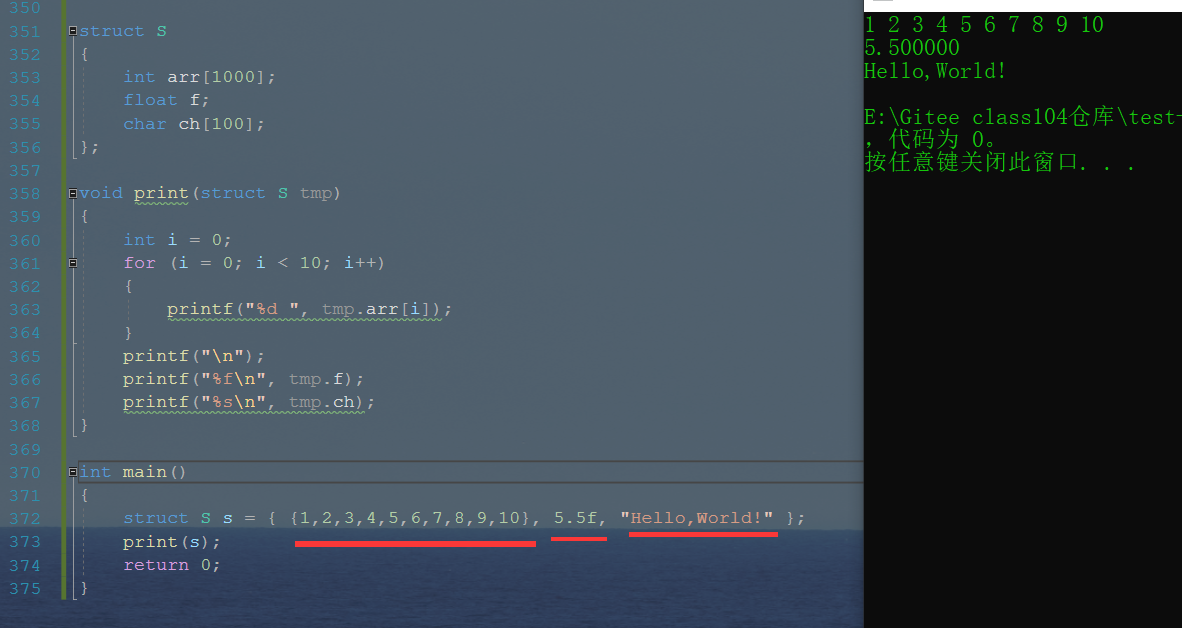
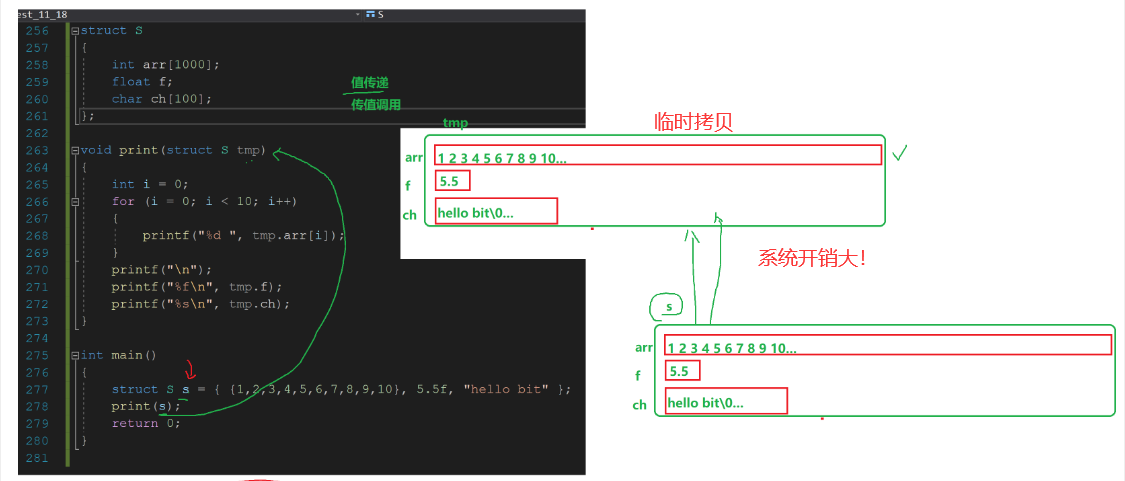
struct S
{
int arr[1000];
float f;
char ch[100];
};
void print1(struct S tmp)
{
int i = 0;
for (i = 0; i < 10; i++)
{
printf("%d ", tmp.arr[i]);
}
printf("\n");
printf("%f\n", tmp.f);
printf("%s\n", tmp.ch);
}
void print2(struct S* ps)
{
int i = 0;
for (i = 0; i < 10; i++)
{
printf("%d ", ps->arr[i]);
}
printf("\n");
printf("%f\n", ps->f);
printf("%s\n", ps->ch);
}
int main()
{
struct S s = { {1,2,3,4,5,6,7,8,9,10}, 5.5f, "hello bit" };
//print1(s);
print2(&s);
return 0;
}
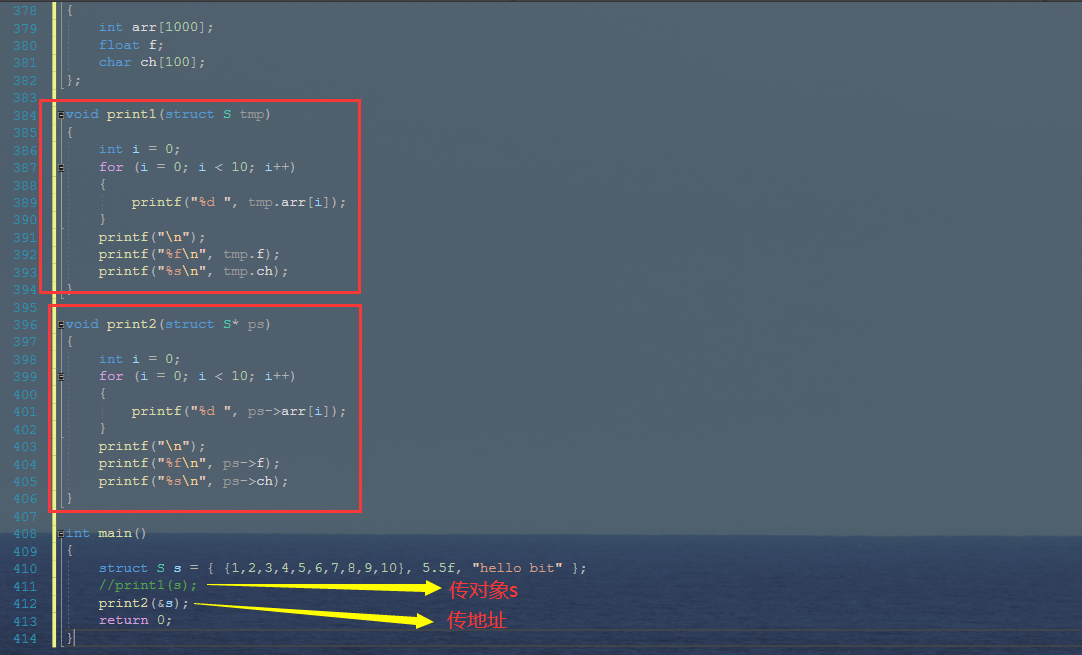

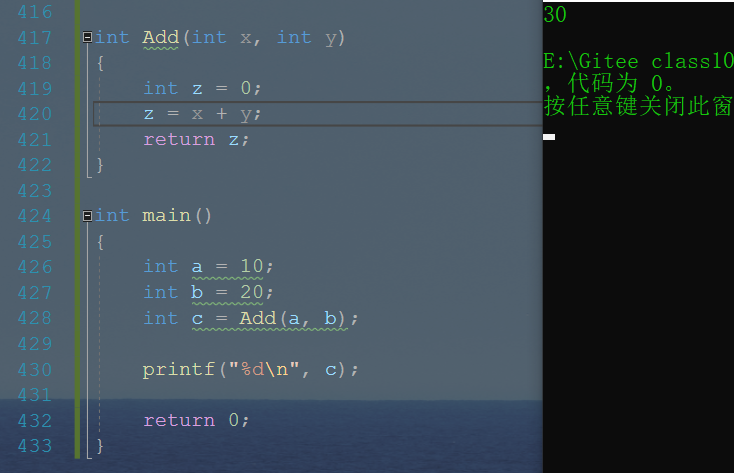
int Add(int x, int y)
{
int z = 0;
z = x + y;
return z;
}
int main()
{
int a = 10;
int b = 20;
int c = Add(a, b);
printf("%d\n", c);
return 0;
}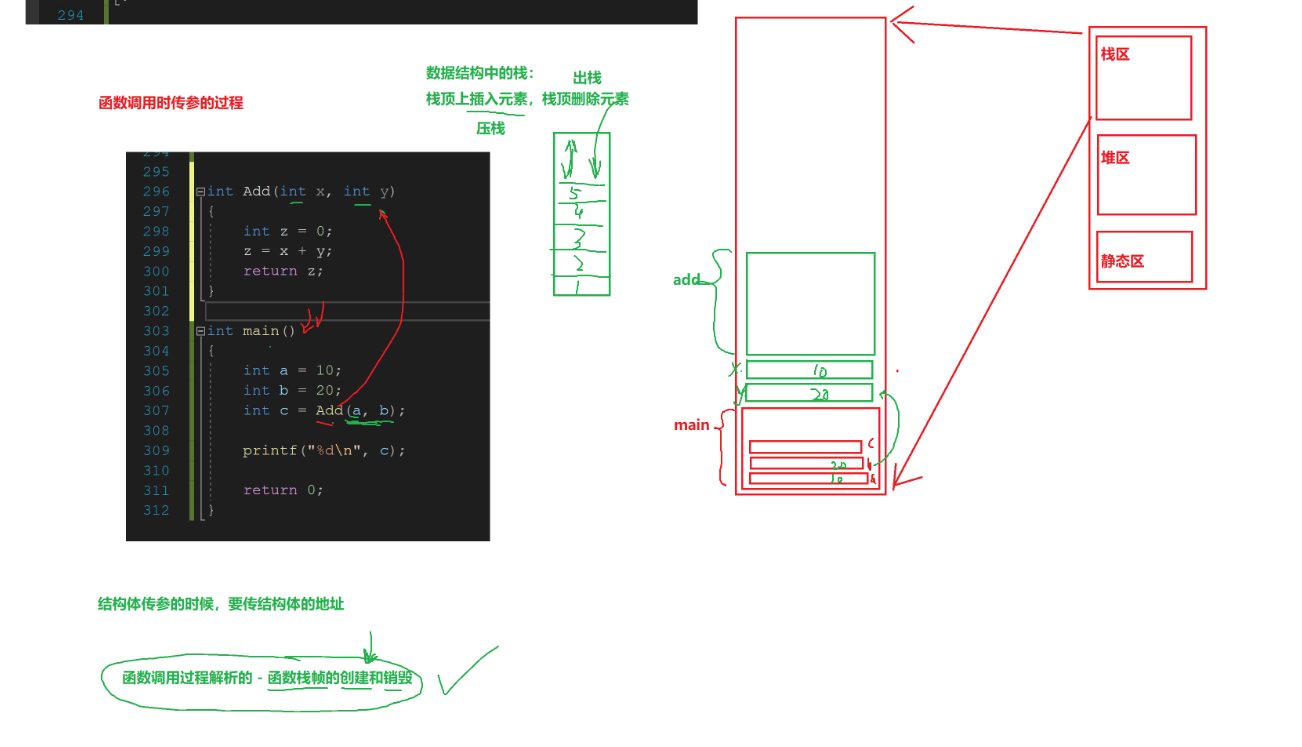
Function call process analysis - the creation and destruction of function stack frames. See the notes in the next section!